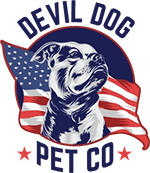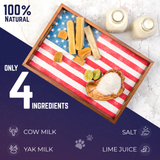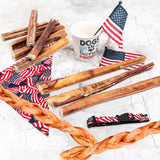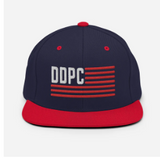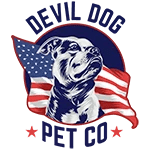Moose meat has caught the attention of dog owners looking for novel protein sources, especially those feeding raw diets or seeking alternatives to traditional beef and chicken. This wild game meat offers impressive nutritional benefits, but moose meat for dogs comes with serious safety considerations that every responsible owner must understand before serving it to their four-legged family member.
Key Takeaways
- Moose meat can be safe for dogs if it is properly prepared to eliminate health risks.
- There are significant risks associated with moose meat, including parasites and chronic wasting disease.
- Some dogs may experience allergic reactions to moose meat.
- Moose meat is considered a novel protein source, especially popular among raw diet feeders.
- Commercial dog food remains the safer and more regulated choice for daily canine nutrition.
Table of Contents
- What Is Moose Meat and Why Consider It for Dogs?
- 5 Essential Safety Facts Every Dog Owner Must Know
- Why Commercial Options Often Win
- The Reality of Sourcing Safe Moose Meat
- What Veterinarians Say About Wild Game for Dogs
- Practical Alternatives That Deliver Similar Benefits
- Processing and Preparation Safety Protocols
- Cost-Benefit Analysis: The Reality Check
- Making the Right Decision for Your Dog
As a Marine veteran and co-founder of Devil Dog Pet Co., I've seen too many well-intentioned owners make feeding decisions without fully understanding the risks. When it comes to wild game like moose, the stakes are higher than your average protein swap. Let's cut through the noise and give you the unfiltered truth about moose meat safety for dogs.
What Is Moose Meat and Why Consider It for Dogs?
Moose meat comes from North America's largest member of the deer family, typically harvested through regulated hunting in Alaska, Canada, and northern U.S. states. Moose meat contains roughly 22 grams of protein per 100 grams with minimal fat content, making it an attractive option for dogs needing lean protein sources.
Unlike commercial livestock, moose roam wild territories, feeding on natural vegetation without hormones or antibiotics. This appeals to owners seeking "clean" protein sources, especially those managing food allergies or sensitivities in their dogs. However, this wild origin also introduces risks that don't exist with regulated commercial proteins.
You might be wondering where to source this protein. Moose meat for sale typically comes from licensed hunters, specialty game processors, or imported sources from Canada. The challenge? Finding reliable, properly processed moose meat that meets safety standards for canine consumption.
5 Essential Safety Facts Every Dog Owner Must Know

Parasite Contamination Is a Real Threat
Wild moose carry parasites that domestic livestock rarely encounter. Echinococcus granulosus (hydatid disease) and various muscle parasites can survive in improperly processed meat. These parasites don't just cause digestive upset—they can create life-threatening complications requiring emergency veterinary intervention.
Chronic Wasting Disease (CWD) Transmission Risk
Chronic Wasting Disease affects cervids (deer family members) including moose in certain regions. While transmission to dogs hasn't been definitively proven, the prion-based disease is 100% fatal in affected animals. CWD-positive areas include parts of Wyoming, Colorado, and expanding regions across North America.
Before considering moose meat near me, research whether your region has documented CWD cases. State wildlife agencies maintain updated CWD distribution maps that should influence your sourcing decisions. For more information on disease precautions and wild game, see the AVMA's disease precautions for hunters.
Commercial Sale Regulations Create Safety Gaps
Unlike USDA-inspected beef or chicken, wild game meat operates in a regulatory gray area. When you search where can I buy moose meat, you'll find sources ranging from licensed processors to individual hunters—with vastly different safety protocols.
- Licensed game processors follow state-mandated safety procedures
- Individual hunters may lack proper field dressing and storage knowledge
- Import regulations vary significantly between states and provinces
- No federal oversight ensures consistent safety standards
Novel Protein Allergic Reactions
Dogs can develop allergies to any protein, including those they've never encountered. Moose meat's unique protein structure means even dogs with beef or venison sensitivities might react unexpectedly. Symptoms range from mild digestive upset to severe allergic reactions requiring immediate veterinary care.
Proper Preparation and Storage Demands
Safe moose meat handling requires more than standard food safety protocols. Wild game demands immediate field dressing, proper cooling, and specific storage temperatures to prevent bacterial growth. Many owners underestimate these requirements when purchasing moose meat for sale online or from local sources.
Improper handling creates breeding grounds for Salmonella, E. coli, and Clostridium bacteria—all potentially fatal to dogs with compromised immune systems or underlying health conditions.
Why Commercial Options Often Win
Before you search buy moose meat or moose steaks for sale, consider that commercial dog food manufacturers have already solved the novel protein challenge. Venison, bison, and other alternative proteins undergo rigorous safety testing while delivering similar nutritional benefits without the wild game risks.
Our dog Dexter thrives on high-quality commercial proteins paired with natural chews like elk antlers and yak chews—delivering nutritional variety without the safety gamble of wild game meat.
The Reality of Sourcing Safe Moose Meat

When you start searching where can I buy moose meat, you'll quickly discover that sourcing quality moose meat isn't as straightforward as picking up chicken at the grocery store. The supply chain for wild game operates through a network of hunters, processors, and specialty retailers—each with varying safety standards and quality control measures.
Licensed Processors vs. Individual Hunters
Licensed game processing facilities follow state-mandated protocols for field dressing, cooling, and storage. These operations typically maintain HACCP (Hazard Analysis Critical Control Points) systems similar to commercial meat processors. When you buy moose meat from these sources, you're getting meat that's been handled under controlled conditions with documented temperature logs and processing dates.
Individual hunters present a different risk profile entirely. While many experienced hunters follow excellent field practices, others may lack proper knowledge of safe meat handling. Factors like shot placement, field dressing timing, cooling methods, and transportation can all impact meat safety—variables you can't control or verify when purchasing from private sources.
Online vs. Local Sourcing Challenges
Searching moose meat for sale online reveals numerous retailers, but shipping wild game meat introduces additional complications. Proper cold chain management becomes critical—meat must stay frozen during transit, which requires specialized packaging and expedited shipping methods that significantly increase costs.
- Reputable online retailers use dry ice packaging and overnight shipping
- Local sourcing allows you to inspect meat quality and ask processing questions
- Regional processors often have better knowledge of local disease risks
- Online purchases make it harder to verify actual harvest dates and locations
When evaluating moose meat near me options, prioritize processors who can provide harvest location data, processing facility licenses, and clear storage timelines. This information helps you assess disease risk factors and meat quality before feeding it to your dog. For more on the realities of wild game meat and disease, see this Alaska Department of Fish and Game article.
What Veterinarians Say About Wild Game for Dogs
Veterinary nutritionists consistently express caution about wild game proteins for domestic dogs. Dr. Jennifer Larsen from UC Davis School of Veterinary Medicine notes that while wild game can provide excellent nutrition, the disease risk factors often outweigh the benefits for most pet dogs.
"The nutritional advantages of wild game proteins are easily replicated with commercial novel protein diets that undergo rigorous safety testing. Unless there's a specific medical need for wild protein sources, I recommend sticking with regulated alternatives."
Disease Transmission Risk Assessment
Veterinary parasitologists have documented several cases of dogs contracting parasitic infections from wild game consumption. Trichinella spiralis (trichinosis) remains a particular concern with wild cervids, causing muscle inflammation, digestive distress, and in severe cases, cardiac complications.
The challenge with searching moose steaks for sale is that most sellers can't provide disease testing results. Commercial livestock undergoes ante-mortem and post-mortem inspections specifically designed to catch disease indicators before meat enters the food chain—protections that don't exist for wild-harvested game.
| Disease Risk | Commercial Meat | Wild Moose Meat |
|---|---|---|
| Parasitic Infection | Virtually eliminated through inspection | Moderate to high risk |
| Bacterial Contamination | Controlled through HACCP systems | Variable based on handling |
| Prion Diseases (CWD) | Not applicable | Low but potentially fatal risk |
| Regulatory Oversight | USDA/FSIS inspection required | Minimal to none |
Practical Alternatives That Deliver Similar Benefits

Before committing to the complexities of wild moose meat, consider that the pet food industry has developed excellent alternatives that provide similar nutritional benefits without the safety risks. Novel protein diets featuring venison, bison, rabbit, elk meat, and duck offer the same hypoallergenic advantages with consistent quality control.
Freeze-Dried Raw Alternatives
Companies like Stella & Chewy's, Primal, and Northwest Naturals offer freeze-dried venison and other novel proteins that deliver raw nutrition benefits without wild game risks. These products undergo pathogen reduction treatments while maintaining nutritional integrity—giving you the best of both worlds.
Our dog Dexter has thrived on rotation diets featuring these commercial novel proteins, paired with natural chews like elk antlers for dental health and mental stimulation. This approach provides nutritional variety while maintaining safety standards that wild game simply can't match.
The bottom line? Unless you're an experienced hunter with extensive wild game processing knowledge, commercial alternatives provide superior safety profiles while delivering the same nutritional goals that drive interest in moose meat for dogs. For more tips on safe and healthy chews, check out our guide to long lasting dog chews.
Processing and Preparation Safety Protocols
If you've decided to move forward with moose meat despite the risks, proper processing becomes your primary defense against foodborne illness. The window between harvest and proper cooling determines meat safety more than any other factor—and this is where most amateur processing fails.
Home Processing Requirements
Processing moose meat at home requires more than sharp knives and freezer space. You'll need a dedicated workspace that can be sanitized, commercial-grade cutting boards, multiple thermometers, and vacuum sealing equipment to prevent freezer burn during long-term storage.
The grinding process presents particular challenges. Fat content in wild game varies dramatically based on season and animal condition. Too little fat creates dry, crumbly texture; too much increases spoilage risk. Professional processors typically add beef fat to achieve 15-20% fat content—a calculation that requires precision scales and experience.
- Dedicated meat grinder with stainless steel components
- Digital scale accurate to 0.1 oz for fat ratios
- Vacuum sealer with puncture-resistant bags
- Chest freezer maintaining consistent 0°F temperature
- Sanitizing solutions for equipment cleaning
Cooking Temperature Guidelines for Dogs
Dogs require different cooking protocols than humans when consuming wild game. While humans can safely consume medium-rare venison at 130°F internal temperature, dogs should receive fully cooked wild game reaching 160°F throughout to eliminate parasitic risks.
Ground moose meat poses higher contamination risks than whole cuts because grinding distributes surface bacteria throughout the product. Always cook ground wild game to 165°F internal temperature and use within 3 months of freezing for optimal safety.
Cost-Benefit Analysis: The Reality Check
Let's address the economics honestly. When you factor in all costs associated with safely sourcing and preparing moose meat, the financial argument rarely supports the effort for most dog owners.
| Expense Category | Moose Meat Route | Commercial Alternative |
|---|---|---|
| Initial Meat Cost | $8-15/lb for moose steaks for sale | $4-8/lb for premium venison |
| Shipping/Transport | $50-150 for frozen shipping | Free shipping on orders $35+ |
| Processing Equipment | $300-800 for grinder, sealer, tools | $0 (ready to serve) |
| Storage Requirements | Chest freezer $200-400 | Standard freezer space |
| Time Investment | 8-12 hours processing | 5 minutes meal prep |
Nutritional ROI Comparison
The nutritional advantages that drive interest in moose meat—high protein, low fat, novel amino acid profiles—are readily available through commercial sources with superior safety profiles. Premium freeze-dried raw diets deliver 45-50% protein content with complete amino acid profiles, often exceeding wild game nutritional density.
Our experience at Devil Dog Pet Co. has shown that dogs achieve identical health outcomes with commercial novel proteins paired with natural chews for dental health. The combination of quality kibble, rotating protein sources, and species-appropriate chews like elk antlers and bully sticks provides comprehensive nutrition without wild game complications.
Making the Right Decision for Your Dog
Extreme Dog Leadership means making decisions based on facts, not emotions or perceived "naturalness." While moose meat offers legitimate nutritional benefits, the practical challenges of safe sourcing, proper processing, and consistent quality control make it an impractical choice for most responsible dog owners.
"The best diet for your dog is one you can execute consistently and safely. Wild game feeding requires expertise that most pet owners don't possess, and the consequences of mistakes can be severe."
If you're determined to explore wild game options, start with commercially processed products from licensed facilities rather than attempting home processing. Companies specializing in wild game for pets maintain the safety protocols and quality control that individual processing cannot match.
When Wild Game Actually Makes Sense
Wild game feeding makes practical sense for experienced hunters who process their own harvests, understand field dressing protocols, and have established relationships with licensed processing facilities. These individuals possess the knowledge base to assess meat quality, recognize disease indicators, and maintain proper storage conditions.
For everyone else, the combination of premium commercial diets and natural chews provides identical nutritional benefits with exponentially better safety margins. Focus your energy on consistent training, adequate exercise, and mental stimulation—factors that impact your dog's wellbeing far more than protein source selection.
Remember: exceptional dog ownership comes from mastering the fundamentals, not chasing nutritional novelties. Channel that research energy into training consistency, exercise routines, and building the human-dog bond that truly determines your pup's quality of life.
Download the FREE 10-Step Dog Prep Guide
Frequently Asked Questions
Is moose a good meat to eat?
Moose meat is lean, nutrient-dense, and packed with protein, making it a healthy choice for many. Its flavor is rich and gamey, often described as deeper and earthier than beef, appealing to those who enjoy wild game. Properly prepared, it’s tender and versatile for a variety of recipes.
Why is moose meat illegal to sell?
Moose meat is illegal to sell commercially in many places because moose are wild game regulated by strict hunting laws to protect populations and ecosystems. Selling wild game meat often requires specific licensing and inspections, which are typically limited or unavailable, making private sales or commercial distribution unlawful to prevent overhunting and ensure food safety.
Is it possible to buy moose meat?
Buying moose meat is generally limited to licensed hunters who harvest their own animals during regulated seasons or to specialty markets in certain regions where legal. Some states or countries allow sales through approved game processors, but for the average consumer, moose meat is not widely available in regular grocery stores or markets due to legal restrictions.
What is moose meat called?
Moose meat is commonly referred to simply as "moose" or "moose meat" in culinary contexts. There’s no special name like "venison" for deer, but it falls under the broader category of wild game meat.
Why can't you eat fresh moose meat?
Fresh moose meat needs proper processing, aging, or cooking to ensure safety and palatability. Immediately after harvest, the meat must be cooled promptly to prevent bacterial growth and allowed to age to tenderize and develop flavor. Eating it fresh without these steps can risk foodborne illness and result in tough, unpalatable meat.
What tastes better, elk or moose?
Taste preference between elk and moose meat depends on individual palates. Elk tends to be milder, sweeter, and more tender, while moose has a stronger, earthier, and gamier flavor with a denser texture. Both are lean wild game options, but elk often appeals to those seeking a less intense game taste.
